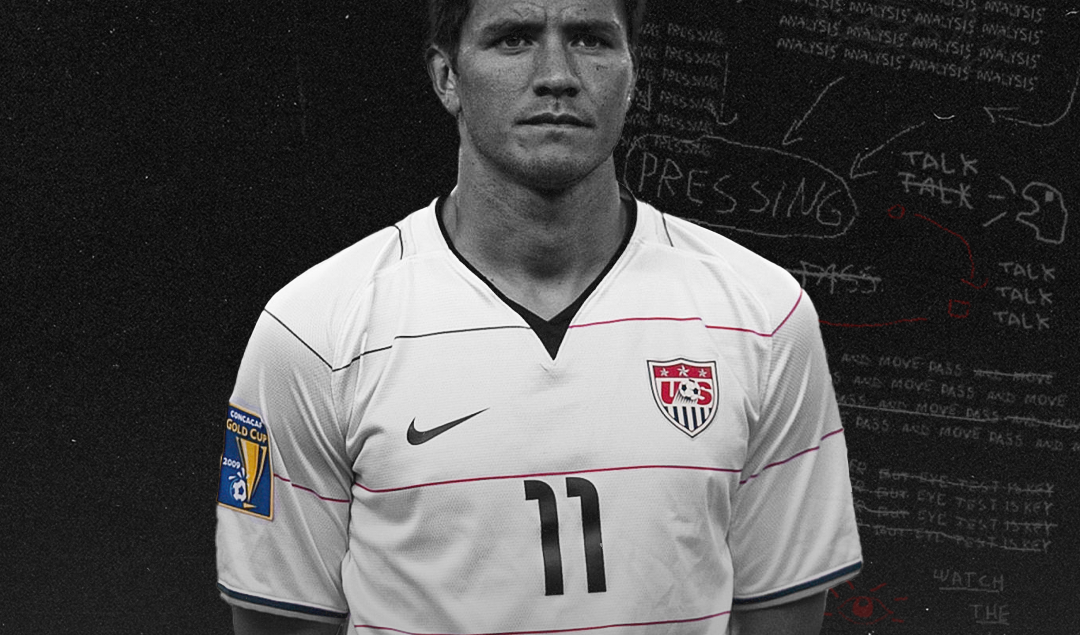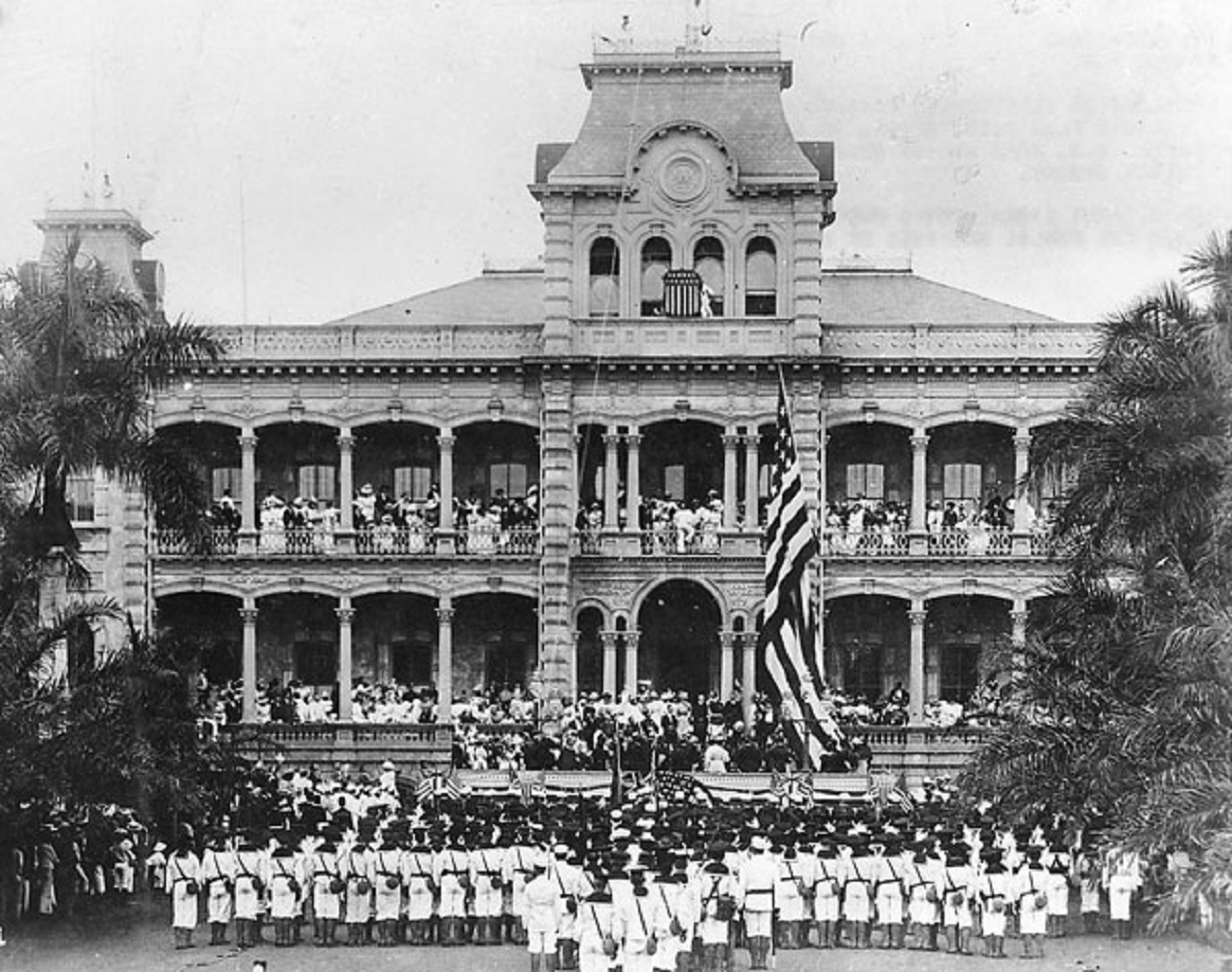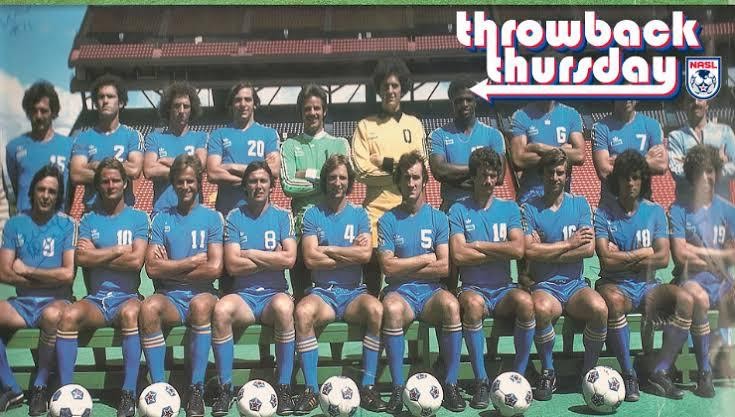Football in Alaska and Hawai’i
Waqaa! Cangacit? / Aloha! Pehea ‘oe? The first greeting is in Yup’ik, the language most widely spoken in Alaska, while you have just guessed the second one – Hawaiian, the language para excellence from the archipelago of the American Union. I hope you are ready to the next step in our trip around the world. Our first stop was Australasia to learn about Australian Aboriginals and Maoris in football. Our next confederation is Concacaf, without leaving the Pacific Ocean.
Musical Recommendation 1
We know so little about Alaska and its folklore. We could say that the North American aboriginals have a sort of kinship one between another, no matter how big the differences can be in this realm. Alaskan peoples do not avoid this situation. We will see now music and dance. John Pingayak is a great person from Chevak, a town with a population lesser than 1,000 people on the Western Alaska coast. He is responsible for the preservation of Yup’ik culture… to give an example, here you have a Yup’ik Seal Dance at the Alaska Native Heritage Center in Anchorage by the Heritage Center Dancers.
This is a translation of the article in Spanish that was published more than one year ago in El 9 y Medio, “Alaska y Hawái, los parias del fútbol professional de Estados Unidos.” Click here to read it.
The Whimsical Geography of the United States
In 1776, 13 colonies in North America had enough of the abuses by England. They set aside the differences between each other… and they associated immediately. The strength is in numbers. Finally, the Independence of the United States was decreed with the treaty of Paris in 1783. This original union was between British-French Canada and Spanish Florida.
“It is the right of our manifest destiny to overspread and to possess the whole of the continent which Providence has given us for the development of the great experiment of liberty and federative development of self-government entrusted to us.
It is right such as that of the tree to the space of air and the earth suitable for the full expansion of its principle and destiny of growth. […] And that claim is by the right of our manifest destiny to overspread and to possess the whole of the continent which Providence has given us for the development of the great experiment of liberty and federated self-government entrusted to us.”
Those were the words of the American journalist John o’ Sullivan in 1845 that boosted people from former British possessions in North America to spread to the West during the 19th Century. This is known as Manifest Destiny. They disseminated one way… or another. Either by procuring territory from the French and the Spaniards or by winning wars against Mexicans, Americans could establish a country that later would be a mighty powerhouse to rule the world.
This is the first federation still living in the world. What is the feature of this union? Unlike the rest of the republics, there is no such highlighted centralism. Each state conforming American Union has autonomy and independence that could correspond to a normal country; nevertheless, they waive some aspects of sovereignty to warranty the collective defence of all Union members. Having said that, this country is called the United States of America – it consists of 50 states, a Federal District, and five autonomous territories.
Let us focus on the states. If you see a small United States map and you count every state, perhaps you will fill 48. Does this amount not match the above number? Not at all. There are two states separated from the Mainland United States. The first state only has a land border with Canada and a sea border with Russia – Alaska. The last one is a set of islands right in the middle of the Pacific Ocean – Hawai’i.
Photo: Nations Online Project
Did you know that Russia was in North America? In the 18th Century, the Russians finally decided to colonize each land portion in front of them, choosing the wildlands offered by the East. The Russians slowly went East until reaching Pacific Oceans; they then saw there was even more uncharted land beyond.
One of the first men interested to see what is there was a Russian with Swedish background called Vitus Bering (Витус Беринг), he claimed to have discovered the finest furs on Earth. This happened in 1742 sailing on St. Gabriel. It was just a matter of time for Russians to settle, in 1784. The strait which separates Russia from North America was named in Bering’s honour.
Despite the pretensions from the Spanish Empire of colonising the lands, the Russians were determined to exploit them with the Russian-American Company (Русская-Американская Компания). The problem was that after 50 years, this land called Alaska was never fully occupied and for the Russian Empire expenses were huger than profits.
History of Hawai’i
During one of his several voyages through the Pacific, James Cook was looking for the North-East Pass between Alaska and Asia; suddenly, he found a couple of islands in 1773. He named them Sandwich Islands, stating his appreciation for the funding by Lord John Montagu, count of Sandwich.
Those islands were inhabited by people with a caste system known as Kapu. They were not people who fell there by chance; around 8th Century AD their ancestor arrived there rowing from all the way back to the Marquesas Islands just to search for bigger territories.
Before the 19th Century, Hawai’i was a land where one island or more was ruled by a certain clan. After that, those were unified in a single kingdom under the power of King Kamehameha. He started the dynasty of the same name who bore up to five monarchs.
Photo: AP Photo – Tim Wright
During the administration of the first two kings, the archipelago was a British protectorate. Kamehameha III achieved independence on November 28, 1843, however, this was immediately followed by the arrival of Europeans and Americans to establish a business there.
Those landowners started to gain power with the eventual goal of conquering them to seize their privileged geographical position on the Pacific and the pineapple and sugar cane plantations there. By 1880, Hawaiian territory was controlled in its 80%. Something should be done.
The foreign settlers intended to commit a coup d’état in 1887 to impose a government puppet of the American interest, yet four years later, they were overpowered by Queen Lili’uokalani, restoring the Kingdom of Hawai’i.
The settlers could not stand idle; the American ambassador, James Dole, wanted to establish a protectorate in order to protect the lives of the Americans from Pearl Harbor naval base. Two years later, they did thrive and ousted the queen. The Republic of Hawai’i was then born.
How Did Alaska and Hawai’I Both Join the United States?
In 1867, an American delegation went to Alaska and detected the potential from these lands, so they offered $7.2 million to the Russian Empire for this terrain. The Russians had no other choice but to accept because they needed the money to help the army that was having a hard time in the Crimean War.
The United States would win in the long run because three decades later there was a second gold rush in this state; one century later, oil fields were found. Alaska was thus populated by ambitious American settlers who endured the most extreme weather.
On the other hand, war between Spain and United States broke out in 1898, the Pearl Harbor base started to become more relevant to the Pacific ambitions. After several negotiations and a brilliant lobbyism, Hawai’i was annexed as US Territory in 1900.
Photo: National Education Association
In 1959, Alaska and Hawai’i left their status of territory and were included in the American Union. On January 3, Alaska became the 49th State, while Hawai’i has been the 50th State since August 21.
Why Do Alaska and Hawai’I Have No Professional Football Teams?
Alaska stands a chance neither for MLS nor for NASL, due to the extreme climate conditions in all this state. The only choice would be playing in the capital Juneau, with weather similar to that in Moscow, or in the most populated city, Anchorage, whose climate is so similar to the most northern European cities. This leads us to the other problem: population. Juneau has barely 32,000 people, while Anchorage does not even surpass 300,000, hence why there is no professional sports team in either city.
What about Hawai’i? It should have no problem to host an MLS or NASL franchise; the weather is nice; the Aloha Stadium (where the NFL Pro Bowl is usually held) is fairly decent, and the Honolulu population (over 950,000) would no doubt cheer for a hypothetical team. The problem arises when we learn that football is far from minor baseball, American football, or surfing as far as popularity is concerned.
However, the biggest hurdle is logistics: an economic-class flight to Honolulu can cost up to $2,000, while the shortest flight with an MLS team (Los Angeles) would have a distance of 4,000 km, almost six hours. Which one would be the longest distance? Imagine a match between Hawai’i Team and New England Revolution, in Boston, MA – more than 8,100 km, 11 flight hours! Now you can earn accumulated miles to claim a free holiday flight to far-flung states.
Football’s History in Hawai’i
This does not mean that Hawai’i has never taken part in the development of football in the US. We have to go back to 1977 when the North American Soccer League was growing quite long roots thanks to the presence of world-class superstars like Pelé and Franz Beckenbauer.
The feature of United States Football is the franchise system. One of them was struggling in the competitions – San Antonio Thunder. Tickets were barely sold; 6,000 for a potential attendance of 23,000), so their fickle owner Ward Lay Jr. decided to take it away to Honolulu. The name: Team Hawaii. It would join the Pacific Conference, more specifically in the Southern Division together with Dallas Tornado, Los Angeles Aztecs, San Jose Earthquakes, and Las Vegas Quicksilvers.
With the franchise relocation to Hawai’i, half of the roster quitted the team, so the recently hired Austrian manager Hubert Vogelsinger started to make use of his contacts previously made, and several answered his call. Among them there was a triad member of that West Ham United that reached UEFA Cup Final in 1976: the defenders Keith Coleman and Tommy Tailor, besides the midfielder Pat Holland. I
In addition, another superstar who joined was Diamantino Costa, a former Benfica player who shared dress rooms with Eusébio in Las Vegas. Team Hawaii was finally completed with the leftover of the NASL transfer market.
Photo: NASL
The first match ever was a goalless draw against Seattle Sounders, yet Americans are obsessed with forcing each game to have a winner and a loser, so there was a sort of golden goal, and the Hawaiians won. The next match saw a clash against New York Cosmos, led by Pelé; this was the best attendance of the season – more than 13 thousand fans. Team Hawaii was outpowered 2-1.
From then, results no longer matched the desires of the team, and Vogelsinger was sacked; he was replaced by Charlie Mitchell, a player who started his managerial career, altering this new position with his role as a striker. This change deemed positive and wins were more frequent.
At the end of the season, Team Hawaii did not make it to the play-off, finishing with an overall 11-15 record, fourth in the division, three wins down to San Jose Earthquakes. Despite the loser record, it was far for being a disappointing season, as it was their first time ever in NASL.
However, Lay Ward Jr. did not want to prolong the Hawaiian expedition. Even if it reported poor profit, the main cause was geographical: the staff spent more hours on the plane than training. This is why the away record was 4-9. The franchise eventually moved to Tulsa, OK.
Hawaiian Footballers
The last story does not mean that Hawai’i lacks of decent footballers. Prominent players such as Bobby Wood, Zach Scott, and Brian Ching, were born in the Hawaiian Islands; however, it seems that Hawai’i will not have a professional football team at least in the short run. As far as amateur football, we have to look in the NCAA second tier.
Hawai’i has three universities, each with its own football teams: Chaminade University and Hawaiian Pacific University, both in Honolulu, and the University of Hawaii, in Hilo. In women’s football, there is happily a team in Tier 1: Brigham Young University in Honolulu.
In 2019, ConIFA welcomed Hui Kanaka Pōwāwae (Hawaiian Football Federation), during the celebration of the Independence from the United Kingdom and France. Now, Hawai’i will have the opportunity to participate in the Oceanian Qualifiers for the ConIFA World Cup. Would Hawai’i have been able to persuade Brian Ching to be capped? Cascadia, the ecoregion comprising Oregon, Washington (US), and British Columbia (Canada), did so with James Riley, the unstoppable fullback from Seattle Sounders.
Football in Alaska
The United States has been horning in its huge geography to search for any advantage possible against Concacaf rivals, mainly in the Hex. For example, the blizzard when the US beat Costa Rica in Denver, CO. When Mexico finally trumped the American sway in Columbus, OH, American fans started to search for another place to regain domination.
Several cities were considered, yet in all of them, the massive Mexican migration in the US would unavoidably invade them. Then the madness… why not bringing the USMNT to Alaska? Temperatures would be low enough to frighten the Mexican player, then Latinos only comprise 5.5% out of the Alaskan population; finally, a Mexican fan would face complicated logistics to travel to Alaska. The United States Soccer Federation has not even given a chance to this option.
Photo: Municipality of Anchorage
In spite of the troublesome conditions, football is starting to make its way through Alaska. The Alaska Soccer Association is in charge of developing the sport in the state, though it only organizes amateur competitions.
To see the teams competing in Alaska, we have to look very deep into the American football system. We then go down to the United Premier Soccer League, akin to the fifth tier. For the teams there, the highest aspiration is clinching a berth in the Lamar Hunt US Open Cup, because of the possibility of meeting teams from the top-flight, like the United Soccer League and even the MLS.
The United Premier Soccer League is geographically divided according to the states. The Alaska championship is called the Last Frontier with only three teams: Arctic Rush and Cook Inlet SC, both in Anchorage, and MatSu United FC (formerly Alaska City FC), in Palmer. The level there is rather poor and the chances to reach further stages are neglectable; qualifying for the Lamar Hunt Cup seems a mission impossible; nevertheless, football in Alaska goes slowly but steady.
Sources
The USA Online. History of the United States: Independence (1754-1783). Date unknown
Roos, Dave. How Do New States Become Part of the U.S.? How Stuff Works. June 29, 2020
The American Yawp Reader. John O’Sullivan Declares America’s Manifest Destiny, 1845. Date unknown
History.com Editors. Alaska. History.com. October 27, 2009
Smithsonian.mag. Hawaii – History and Heritage. November 6, 2007
Stairiker, Kevin. Welcome, Alaska and Hawaii: 1959 was the year the U.S. went from 48 to 50 states. Lancaster Online. October 12, 2019
United States Census Bureau
Flight Connections. Direct Flights from Honolulu
Vaquero Rodríguez, Manuel. Team Hawaii: único en su especie. Vavel Spain. May 9, 2016
Next College Student Athlete
Hawaiian Football. Hawaiian Football Joins ConIFA. April 4, 2020
West, Phil. James Riley: From MLS to the CONIFA World Football Cup with Cascadia. MLS Soccer. May 24, 2018
Salazar, Jo-Ryan. MLS Expansion: 10 Best and Worst Places for Major League Soccer to Expand. The Bleacher Report. February 2, 2011
Showell, Alex. The USMNT should be more diverse with venue selection. Stars and Stripes FC. October 24, 2018
[Deleted]. Have USMNT/WNT ever played a competitive game in Alaska/Hawaii? Reddit thread. February 7, 2020
Alaska Youth Soccer
Musical Recommendation 2
I would like to close this text with a childhood memory. Do you remember the Disney film Lilo & Stitch? The soundtrack was remarkable. Together with the brilliant composer Alan Silvestri, the other co-author is a Hawaiian whose name is Mark Keali’i Ho’omalu. One of the songs that portray Hawai’i is Hawaiian Roller Coaster Ride; besides Mark, the Kamehameha Schools Young Choir sings. Prepare to go back to your childhood with images from the movie. While writing these lines, I listen to this song and tears run down my cheeks.
Let’s Recap
Alaska y Hawai’i are the US states number 49 and 50, respectively, yet both have no professional football team. In Alaska, scarce population and quite cold weathers cause a lack of teams, while for Hawai’i, the hurdles are low popularity and the geography. This does not mean that football is absent.
Hawai’i had already a football team in 1977, Team Hawaii, but it was only a one-season wonder. There are some hopes with the admission of Hawai’i in ConIFA; on the other hand, Alaska has only three semipro teams in tier 5 of the American football system.
See you next time. Piuraa! / Aloha!
By: Sebastián Alarcón
Featured Image: @GabFoligno / Icon Sports Wire





